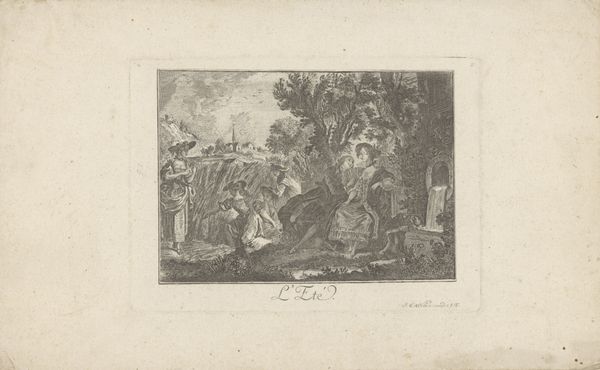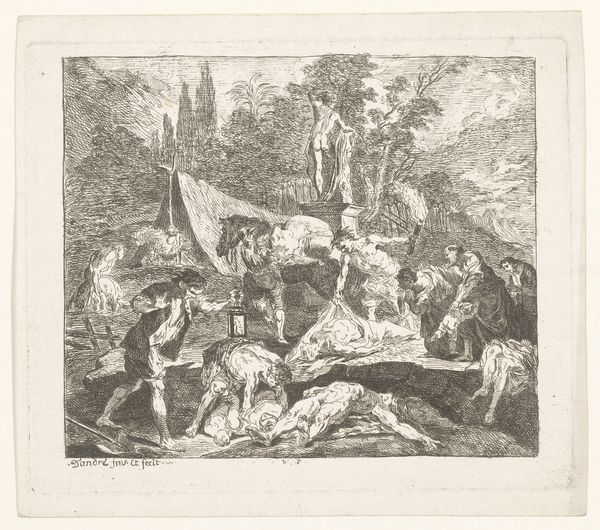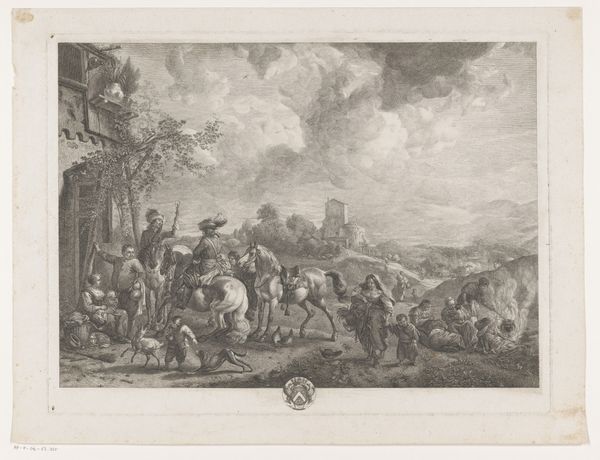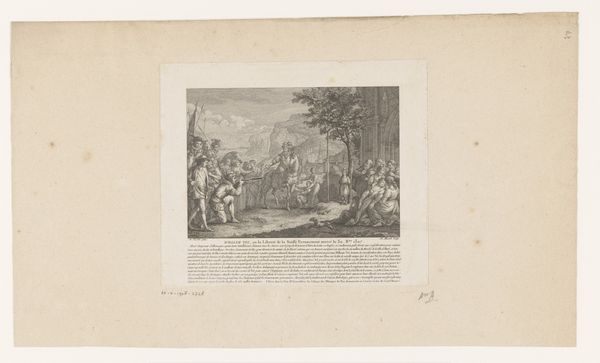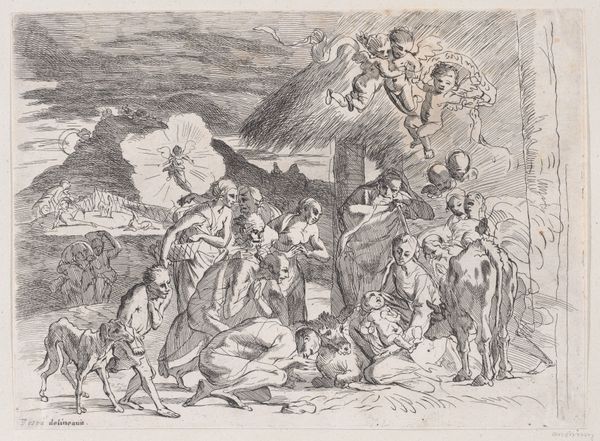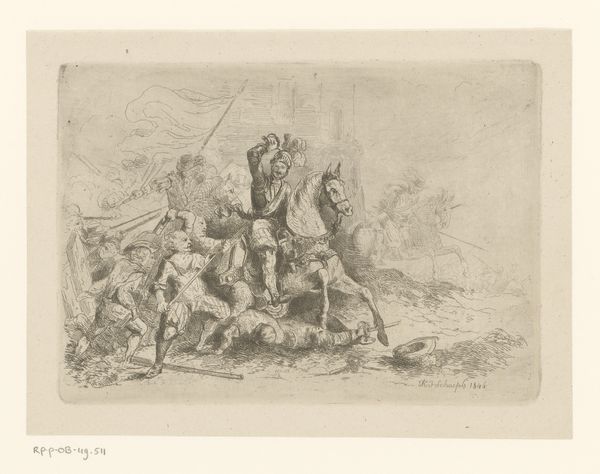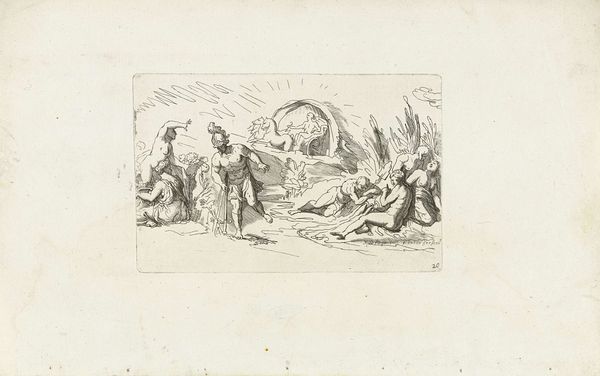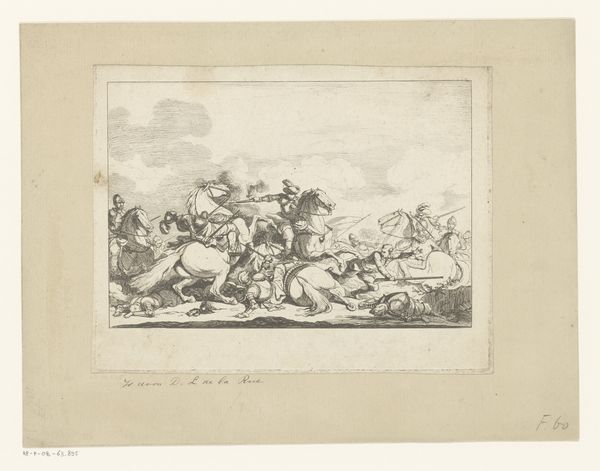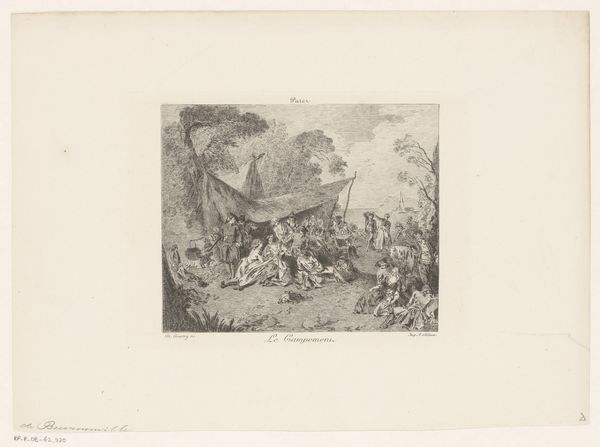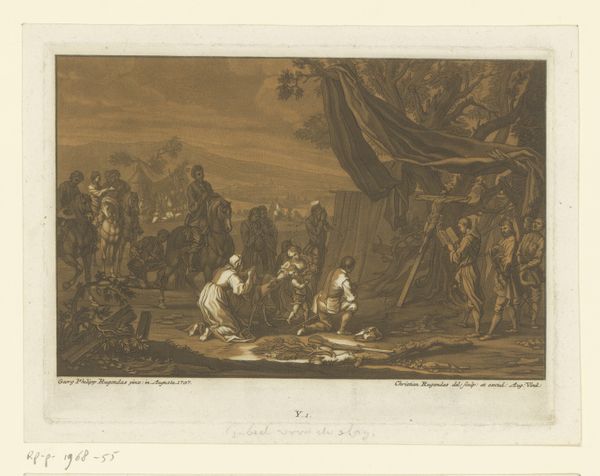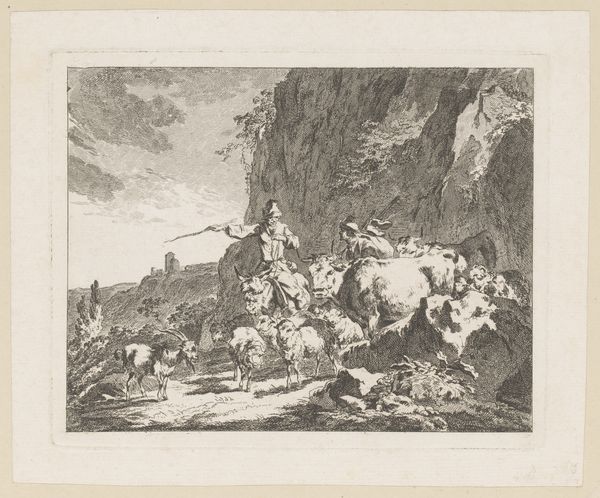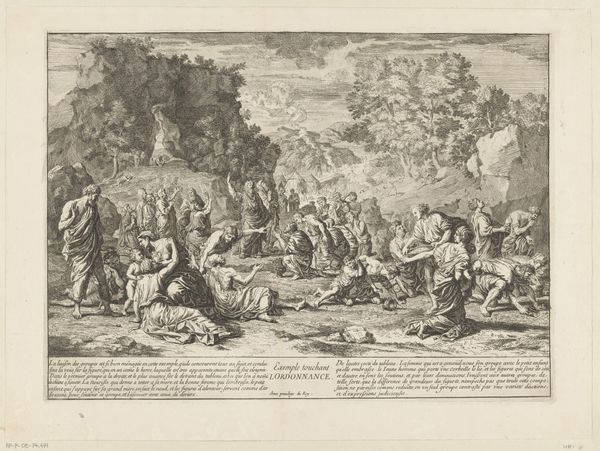
print, etching, paper
#
allegory
#
baroque
#
ink paper printed
# print
#
etching
#
old engraving style
#
figuration
#
paper
Dimensions: height 192 mm, width 258 mm
Copyright: Rijks Museum: Open Domain
Curator: Welcome. Here we have "Putti bij een heiligdom van Minerva," or "Putti at a Shrine of Minerva," a 1724 etching on paper by Paul Troger. Editor: My initial impression is a sense of playful chaos, an allegorical representation that feels almost like witnessing children at play within a mythic world. Curator: Exactly! Troger, who had studied in Italy, clearly brought the influence of the Baroque style to this very playful allegorical composition. Note the depiction of classical figures surrounded by cherubic putti and detailed shrine. It underscores how artists of the time reinterpreted ancient mythology to deliver complex political or religious messages. Editor: It’s fascinating how the figures, despite their seemingly frivolous activities, could still function as visual propaganda. Who did this piece serve to celebrate, or perhaps legitimize? What are they building—and what are they tearing down? The scale of the figures and heavy chiaroscuro contributes to this duality: we both celebrate the cherubs playing and witness this powerful visual theatre. Curator: It speaks to the patron class—and the socio-political power in Europe at the time. The artist is certainly invoking a classical connection with a contemporary, privileged context. Note, too, how Minerva is the deity not just of wisdom but of strategic warfare. The details in the etching technique itself add layers, no? Editor: Indeed, the cross-hatching adds to a textured visual density, that sort of recalls something else in its medium or moment like the prints of Rembrandt. This artistic technique becomes significant. Did prints like these encourage participation and a type of visual citizenship? Curator: Absolutely. It brings art to wider audiences and for broader interpretation. It challenges us to consider both its beauty and how it engages the social contexts that shaped its creation. Editor: For me, thinking about it more broadly— beyond just mythology, this image also brings forward complex and pressing concerns about social justice. Its richness and ambiguity leave one both unsettled and engaged. Curator: I agree—it is precisely this dialogue between past and present that gives pieces such as these enduring relevance.
Comments
No comments
Be the first to comment and join the conversation on the ultimate creative platform.

